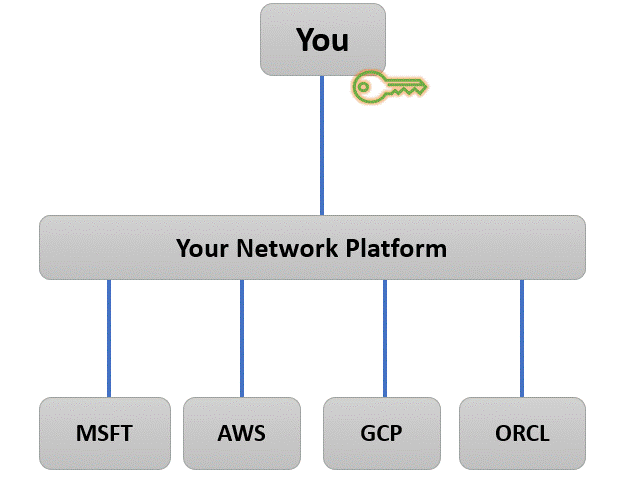It's time for Enterprise Cloud Networking
It’s time to get things cranking here again and a big topic is going to be enterprise cloud networking. What I mean by that in simple terms is how an enterprise can use the networking services of cloud providers to build, migrate, and run their most important applications in any cloud.
Over the last 6 years a lot has happened in the shift to public cloud. I don’t need to explain that to you. We already know that building and migrating applications in/to the cloud is what the world is doing – and for reasons that no longer need explaining.
What’s more interesting now is that the term “the cloud” used to mean one thing: Amazon Web Services. Six years ago, when you said to somebody, “Yeah, so, we are going to migrate this application to the cloud.” – nobody asked what cloud you were talking about and why.
And in the very same stride “cloud networking” implied AWS Networking. If you told somebody that you were a cloud network architect, nobody questioned that either. It meant that you knew AWS VPC, Direct Connect, Route 53, NAT Gateways, Security Groups, VPC subnets and route tables, the various AWS instances sizes and their network performance, and all that goodness. And if anybody questioned your credentials you would flash them your shiny AWS Advanced Networking Speciality certification.
This is how that conversation goes today:
You: “Yeah, so, we’re migrating this application to the cloud and I need to setup the network for that.”
Them: “Cool. Which cloud are we talking about here? AWS, Azure, GCP?”
You: “Oracle, actually.”

So as a network expert you need to be ready to take your company to any cloud. You’ll need to know the various building blocks that each cloud provider has and how to build an architecture with that toolkit. If it’s an enterprise cloud network it will have granular security and segmentation controls, it will selectively insert L4-L7 services, and it will provide traffic visibility and troubleshooting tools for you to continually tune and optimize with.
As with anything in this industry there’s going to be multiple ways to do this. My preference is to use a platform based approach. Let me express to the platform what I want, and let the platform go build that desired state for me on top of any underlying infrastructure, any cloud. A proven approach that has worked very well in the past. Need I point out the success of Cisco UCS or VMware NSX?
For the enterprise cloud network the platform I believe in is Aviatrix.
I’ve joined them as a Principal Solution Architect and will write about this space with an unapologetic bias. I will examine other ways to build the enterprise cloud network (when there’s something to write about there) but it will be in the lens of how I feel it compares to the platform based approach and Aviatrix.
You can leave comments and feedback on this post here on LinkedIn
Disclaimer: the views and opinions expressed are the authors alone and do not necessarily reflect or represent the views of any company or entity that the author may be affiliated with.